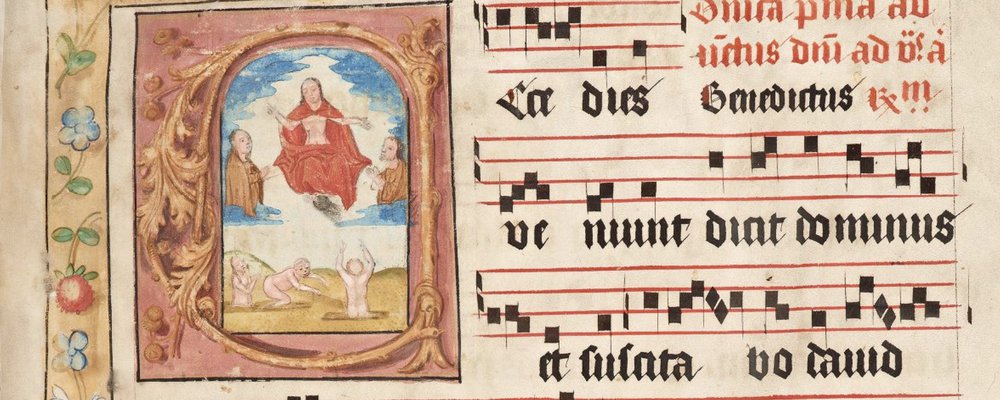Inventories of antiphonaries held in Flanders

B-AVna-ms-IV-412 f. 1r © Alamire Digital Lab
In the Middle Ages, Flanders was one of the most densely populated and literate regions in Europe, with an abundance of abbeys, beguinages, convents and monasteries. These religious institutions cultivated Gregorian music for centuries, providing musical manuscripts for themselves and others. Although many codices have been lost, the corpus of Flemish Gregorian manuscripts preserved today in libraries in the region and elsewhere is still impressive in terms of both its quantity and quality. Despite the wealth of material, however, a good overview of Gregorian manuscripts in Flanders is lacking.
The inventorying of the handwritten antiphonaries up to the year 1800 is an attempt to correct this lack. Antiphonaries are books containing Gregorian music for use in services or the liturgy of the hours. Based on their repertory forms, these extensive sources are a particularly representative yardstick for the region’s contribution to Gregorian music. The project’s aim is to give Gregorian heritage in Flanders a more prominent international image. Both before, during and after the glory days of Flemish polyphony, Gregorian music remained a constant feature of Flemish musical life, making an important contribution to the repertoire sung across Europe.
With the support of the Flemish Community and in collaboration with various partners (Resonant, Ghent University library, local archives and libraries etc.), these manuscripts will be made accessible to both musicology specialists and the archive and library sector, as well as to a wider audience with an interest in culture, by means of inventories, publications, lectures, concerts and an exhibition.
A contract has been signed with Brepols Publishers (Turnhout) for the publication of a series of scientific catalogues of antiphonaries, the first three volumes of which will record the manuscripts stored in Flanders. The internationally accepted standards for describing manuscripts will be applied here.
The first volume appeared in 2015, containing descriptions of the manuscripts in Averbode, Tongeren, Ghent, Geel and Dendermonde. The second volume will give access to the manuscripts from Affligem, Bilzen, Bornem, Grimbergen, Hasselt, Kortrijk, Mechelen, Heverlee, Tongerlo and Westmalle. The digitisation with the ADL of the manuscripts from the Norbertine convent in Gempe, which are stored at Park Abbey and relate to this project, was intensified at the beginning of 2020.
